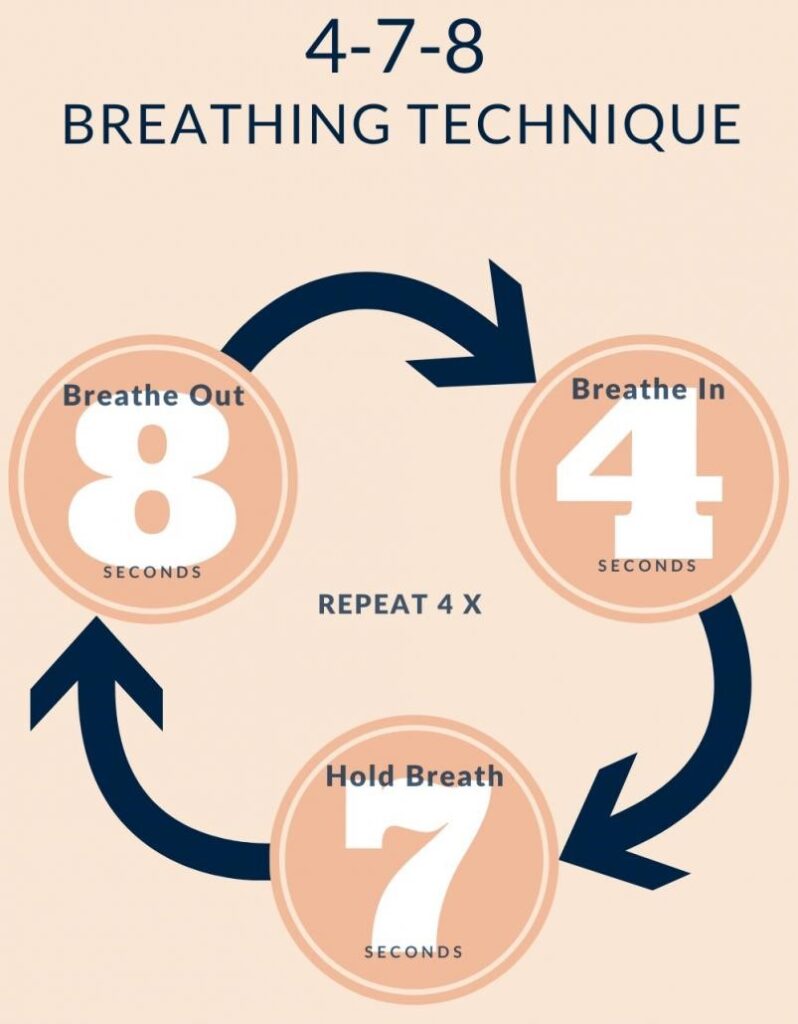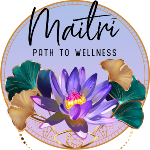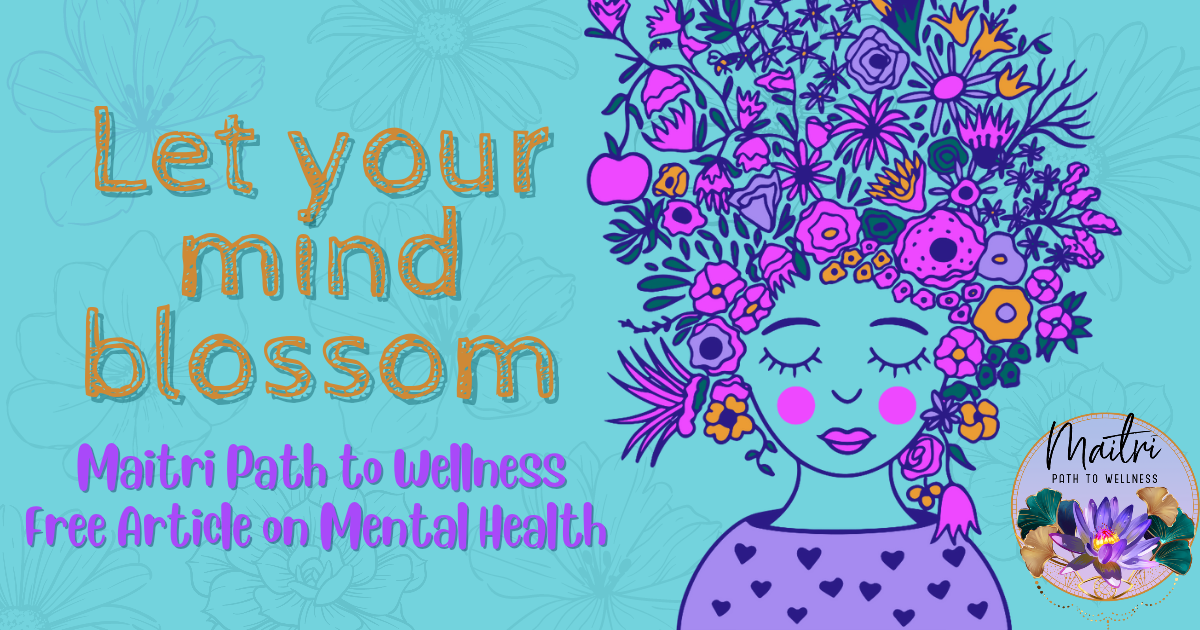Introduction
Anxiety has become a prevalent challenge in today’s fast-paced world, impacting the lives of many. However, there is a powerful tool that can help manage anxiety and cultivate inner peace: mindfulness meditation. In this article, we will explore the profound power of mindfulness in managing anxiety and provide you with invaluable meditation secrets to master mindfulness and find relief from anxiety.
The Power of Mindfulness in Managing Anxiety
Understanding Anxiety and Its Impact
Anxiety is a complex emotional state characterized by persistent worry, fear, and physical manifestations such as increased heart rate and shallow breathing. It can have a significant impact on our overall well-being, affecting our relationships, work productivity, and quality of life. However, by understanding anxiety and its effects, we can begin to regain control.
Introducing Mindfulness Meditation
Mindfulness meditation is a practice rooted in ancient traditions that involves directing our attention to the present moment intentionally. It invites us to cultivate awareness of our thoughts, emotions, and bodily sensations without judgment. Through mindfulness, we develop a compassionate and non-reactive stance toward our anxious thoughts and feelings.
How Mindfulness Helps with Anxiety
Mindfulness interrupts the cycle of anxiety by creating a space for observing and accepting our thoughts and emotions. It allows us to step back from the grip of anxiety, gaining a deeper understanding of our internal experiences. By cultivating a non-judgmental attitude, mindfulness helps us respond to anxiety with kindness and compassion, fostering inner peace.
Scientific Evidence and Research Studies
Numerous scientific studies have explored the effectiveness of mindfulness meditation in managing anxiety. Research has shown that mindfulness-based interventions reduce anxiety symptoms, promote emotional regulation, and enhance overall well-being. Additionally, neuroimaging studies reveal the positive impact of mindfulness on the brain, highlighting its ability to rewire neural pathways associated with anxiety.
Mindfulness: Cultivating Present-Moment Awareness
At the core of mindfulness practice lies the cultivation of present-moment awareness. By consciously directing our attention to the present, we invite a sense of calm and stability into our lives. Here are essential techniques to cultivate mindfulness:
Non-Judgmental Observation of Thoughts and Emotions
Mindfulness invites us to observe our thoughts and emotions without attaching judgment or identifying with them. Through this practice, we become aware that thoughts and emotions are transient phenomena passing through our awareness. By adopting a non-judgmental stance, we develop a healthier relationship with our anxious thoughts, reducing their power over us.
Embracing Acceptance and Letting Go
An essential aspect of mindfulness is accepting things as they are in the present moment. It involves acknowledging our thoughts, emotions, and bodily sensations without resistance or attempts to control them. Through acceptance, we can cultivate a sense of peace and reduce the struggle with anxiety. Letting go of attachment to outcomes and embracing impermanence further supports this practice.
Integrating Mindfulness into Daily Life
Mindfulness extends beyond formal meditation practice; it becomes a way of life. By infusing mindfulness into daily activities, such as eating, walking, or interacting with others, we can deepen our present-moment awareness. Engaging in these activities with mindful intention brings us back to the here and now, fostering a sense of tranquility amid the chaos of daily life.
Research: Studies on the Effectiveness of Mindfulness for Anxiety
Scientific research consistently highlights the effectiveness of mindfulness-based interventions in managing anxiety. Let’s explore some key findings:
Neurological and Physiological Benefits of Mindfulness
Neuroimaging studies have shown that regular mindfulness practice positively impacts the brain. It strengthens neural connections associated with attention, emotion regulation, and self-awareness while reducing activity in regions linked to anxiety and stress. Additionally, mindfulness has been found to decrease levels of stress hormones, such as cortisol, promoting a sense of calm and well-being.
Comparisons of Mindfulness Approaches for Anxiety
Various mindfulness approaches, including Mindfulness-Based Stress Reduction (MBSR) and Mindfulness-Based Cognitive Therapy (MBCT), have been studied for their effectiveness in reducing anxiety symptoms. Research suggests that these programs, which incorporate mindfulness meditation and cognitive-behavioral techniques, can significantly alleviate anxiety and prevent relapse.
Long-Term Effects of Mindfulness Practice on Anxiety
Longitudinal studies indicate that maintaining a regular mindfulness practice yields long-term benefits for anxiety management. Continued engagement with mindfulness strengthens adaptive coping mechanisms, reduces anxiety-related rumination, and enhances resilience in the face of stressors. The cumulative effects of sustained practice contribute to a lasting sense of calm and well-being.
Techniques for Practicing Mindfulness Meditation
Mindfulness meditation encompasses a range of techniques that can be tailored to individual preferences and needs. Let’s explore key practices for cultivating mindfulness:
Guided Meditations
Guided meditations serve as a valuable support for mindfulness practice, especially for beginners. They provide verbal instructions to help direct attention and cultivate mindfulness. Here are some popular guided meditations for anxiety relief:
Body Scan Meditation
The body scan meditation involves systematically directing attention to different parts of the body, bringing awareness to physical sensations and promoting relaxation. Starting from the toes and moving upward, this practice helps develop a deeper connection with the body and release tension.
Loving-Kindness Meditation
Loving-kindness meditation focuses on cultivating feelings of compassion, love, and kindness towards oneself and others. By offering well-wishes and extending goodwill, this practice promotes a sense of connection, nurtures positive emotions, and reduces anxiety.
Breathing Awareness Meditation
Breathing awareness meditation centers attention on the breath, anchoring us in the present moment. By observing the natural rhythm of our breath, we cultivate a calm and focused mind, reducing anxiety and stress.
Walking Meditation
Walking meditation involves bringing mindful awareness to the act of walking. With each step, we attentively observe the sensations in our feet and legs, the movement of our body, and the surrounding environment. Walking meditation allows us to connect with the present moment while engaging in a physical activity.
Breathing Practices
Breathing exercises are powerful tools for anxiety relief. By consciously regulating our breath, we can calm the nervous system and promote a sense of relaxation. Here are some effective breathing practices:
Diaphragmatic Breathing
Diaphragmatic breathing, also known as belly breathing, involves intentionally using the diaphragm to expand and contract the abdomen while breathing. This practice activates the body’s relaxation response, reducing anxiety and promoting a sense of calm.
Box Breathing Technique
The box breathing technique is a simple yet effective practice for anxiety management. It involves inhaling, holding the breath, exhaling, and holding again, each for an equal count of time. This rhythmic pattern helps regulate the nervous system, promoting a state of balance and tranquility.
4-7-8 Breathing Exercise

The 4-7-8 breathing exercise is a popular technique that involves inhaling deeply through the nose for a count of four, holding the breath for a count of seven, and exhaling slowly through the mouth for a count of eight. This practice promotes relaxation and calms the mind.
Alternate Nostril Breathing
Alternate nostril breathing, also known as Nadi Shodhana, is a yogic breathing technique that balances the energy channels in the body. By alternating the breath between the nostrils, this practice calms the mind, reduces anxiety, and enhances focus.
Mindful Movement Exercises
In addition to seated meditation practices, mindful movement exercises offer an embodied approach to mindfulness. These practices integrate movement and awareness, promoting relaxation and grounding. Here are some examples:
Yoga for Anxiety Relief
Yoga combines physical postures (asanas), breath control (pranayama), and meditation to cultivate mindfulness and reduce anxiety. Various yoga poses, such as forward bends and gentle twists, promote relaxation and release tension in the body.
Tai Chi and Qigong for Mind-Body Harmony
Tai Chi and Qigong are ancient Chinese practices that involve gentle movements, deep breathing, and meditation. These practices cultivate mindfulness, balance the body’s energy, and promote a sense of harmony and well-being.
Progressive Muscle Relaxation
Progressive muscle relaxation is a technique that involves systematically tensing and releasing muscle groups throughout the body. By cultivating awareness of muscle tension and consciously relaxing, this practice promotes deep relaxation and reduces anxiety.
Mindful Stretching and Body Awareness
Engaging in mindful stretching exercises, such as gentle stretches or yoga-inspired flows, helps develop body awareness and promote a sense of presence. By bringing attention to the sensations in the body, we cultivate a deeper connection with ourselves and reduce anxiety.
Incorporating Mindfulness into Daily Activities
Beyond formal meditation practices, mindfulness can be integrated into daily activities, allowing us to experience the present moment fully. By bringing a mindful attitude to our daily routines, we nurture a sense of calm and presence. Here are some ways to incorporate mindfulness into daily life:
Mindful Eating
Eating mindfully involves savoring each bite, bringing attention to the flavors, textures, and smells of the food. By eating slowly and with awareness, we can enhance our relationship with food, reduce overeating, and cultivate gratitude for nourishment.
Mindful Walking and Commuting
Walking or commuting can be an opportunity to practice mindfulness. By paying attention to the sensations of the body in motion, the sounds around us, and the environment we are in, we can engage in a walking meditation, promoting a sense of calm and grounding.
Mindful Listening and Communication
When engaging in conversations, practicing mindful listening allows us to be fully present with the person speaking. By giving our undivided attention, suspending judgment, and responding with kindness and understanding, we nurture deeper connections and reduce interpersonal anxiety.
Mindful Self-Care and Restorative Practices
Engaging in self-care activities with mindfulness can enhance their effectiveness. Whether it’s taking a warm bath, practicing a hobby, or engaging in restorative practices like meditation or gentle yoga, doing so with awareness brings a sense of rejuvenation and peace.
Panic Attacks: Understanding and Managing with Mindfulness
Panic attacks are intense episodes of anxiety accompanied by overwhelming physical sensations. Mindfulness techniques can provide effective support during these challenging moments. Here’s how mindfulness can help manage panic attacks:
Understanding Panic Attacks and their Triggers
Educating ourselves about panic attacks is an essential step in managing them effectively. By understanding the physical and psychological components of panic attacks, we can gain insight into our triggers and develop strategies to navigate these episodes.
Mindfulness Techniques for Managing Panic Attacks
When a panic attack occurs, mindfulness techniques can help ground us and manage the overwhelming sensations. Here are some techniques to try during a panic attack:
Grounding Techniques during Panic Attacks
Grounding techniques redirect our attention to the present moment, allowing us to regain a sense of stability. Some grounding techniques include focusing on the sensations of our feet on the ground, observing our breath, or gently touching objects around us to anchor ourselves in the present.
RAIN Method for Panic Attack Management
The RAIN method is a mindfulness-based approach for managing difficult emotions, including panic. RAIN stands for Recognize, Allow, Investigate, and Nurture. By following these steps, we can create space for the panic, investigate its underlying causes, and offer ourselves compassion and support.
Self-Compassion and Calming Affirmations
During a panic attack, practicing self-compassion is crucial. Offering ourselves kind and reassuring words can help soothe the anxiety. Calming affirmations such as “I am safe and supported” or “This too shall pass” can provide comfort and reduce the intensity of panic.
Creating a Panic Attack Safety Plan
Developing a safety plan for managing panic attacks can empower us in moments of distress. This plan may include identifying supportive individuals to reach out to, strategies for self-soothing, and techniques to create a calming environment.
Overcoming Common Challenges in Mindfulness Meditation
While mindfulness meditation can be transformative, it’s essential to address common challenges that may arise during practice. Here are strategies to overcome these challenges:
Dealing with Restlessness and Monkey Mind
Restlessness and a wandering mind are common experiences in meditation. Rather than resisting or becoming frustrated, we can observe these thoughts with curiosity and gently guide our attention back to the present moment. With practice, our ability to maintain focus improves.
Managing Resistance and Impatience
Resistance and impatience can arise when starting a mindfulness practice. It’s essential to approach these feelings with self-compassion and understand that progress takes time. Each moment of practice, regardless of how it may feel, contributes to our growth and well-being.
Finding Time and Consistency
Finding time for meditation can be challenging in our busy lives. Starting with short sessions and gradually increasing the duration can help establish consistency. Remember, even a few minutes of practice can make a difference. Consider integrating mindfulness into daily routines or finding pockets of time for mini-meditations throughout the day.
Seeking Support and Guidance
Seeking support and guidance from qualified instructors or meditation communities can enrich our mindfulness journey. Connecting with others who share similar experiences allows us to learn from their insights and gain valuable encouragement and accountability.
Creating a Mindful Lifestyle for Long-Term Anxiety Management
To fully experience the benefits of mindfulness, it’s crucial to integrate it into our daily lives and create a mindful lifestyle. Here are strategies for establishing a long-term practice:
Consistency and Establishing a Daily Practice
Consistency is key in mindfulness practice. Find a dedicated time and space for meditation, whether it’s in the morning, during lunch breaks, or in the evening. By prioritizing daily practice, we reinforce the habit of mindfulness and cultivate its benefits.
Integrating Mindfulness into Morning and Evening Routines
Incorporating mindfulness into morning and evening routines can set a positive tone for the day and support relaxation and restful sleep. Consider starting the day with a brief meditation, setting intentions, or journaling. In the evening, practice gratitude and reflection to cultivate inner peace and prepare for rest.
Mindful Stress Management Strategies
Stress is a common trigger for anxiety, making stress management essential. Mindfulness offers various techniques for managing stress, such as deep breathing exercises, body scans, and mindfulness-based stress reduction practices. By integrating these strategies into our daily routines, we can effectively navigate stressful situations and reduce anxiety.
Cultivating Gratitude and Positive Mindset
Practicing gratitude and adopting a positive mindset contribute to a mindful lifestyle. By regularly acknowledging and appreciating the positive aspects of our lives, we shift our focus from anxiety to the abundance around us. Cultivating a positive outlook enhances our well-being and resilience.
Enhancing Mindfulness with Other Anxiety Management Strategies
While mindfulness is a powerful tool, combining it with other anxiety management strategies can further support our well-being. Here are additional approaches to consider:
Cognitive-Behavioral Techniques
Combining mindfulness with cognitive-behavioral techniques can help address anxious thought patterns and beliefs. Mindfulness allows us to observe our thoughts non-judgmentally, while cognitive-behavioral strategies help reframe negative thinking patterns and develop healthier cognitive habits.
Physical Exercise and Mind-Body Connection
Regular physical exercise has been shown to reduce anxiety and improve overall well-being. Engaging in activities such as yoga, running, or dancing not only supports physical health but also cultivates mindfulness, as we bring our attention to the body’s movements and sensations.
Journaling and Self-Reflection
Journaling provides a valuable outlet for processing emotions, clarifying thoughts, and gaining self-awareness. By combining mindfulness with journaling, we deepen our understanding of our anxiety triggers and develop insights into our thought patterns and behaviors.
Seeking Professional Help when Needed
While mindfulness can be beneficial, it’s important to seek professional help when anxiety becomes overwhelming or significantly impacts daily life. Mental health professionals can provide guidance, support, and additional tools tailored to individual needs.
Conclusion
Incorporating mindfulness meditation into our lives can be a transformative journey in managing anxiety and finding inner peace. By cultivating present-moment awareness, understanding anxiety’s impact, and embracing mindfulness techniques, we empower ourselves to navigate anxiety with greater ease and resilience. Remember, mastering mindfulness is a lifelong practice, and with dedication and patience, we can find relief from anxiety and cultivate a more fulfilling and balanced life.
FAQ
How long does it take to see benefits from mindfulness meditation?
The benefits of mindfulness meditation can be experienced in the short term, such as increased calmness and reduced stress. However, to fully harness its transformative power for anxiety management, regular practice over weeks or months is recommended.
Can mindfulness meditation cure anxiety?
Mindfulness meditation is not a cure for anxiety, but it is a powerful tool for managing and reducing its impact. It can significantly improve anxiety symptoms and enhance overall well-being. It’s important to work with healthcare professionals for comprehensive anxiety treatment.
Is mindfulness meditation suitable for everyone?
Mindfulness meditation can benefit most individuals, but it’s important to consider individual needs and circumstances. If you have specific mental health conditions or trauma, it’s advisable to consult a healthcare professional for guidance on integrating mindfulness practices into your wellness routine.
Can I practice mindfulness meditation on my own?
Absolutely! Mindfulness meditation can be practiced independently. However, seeking guidance from qualified instructors or joining meditation communities can deepen your understanding and provide valuable support on your mindfulness journey.
Are there any specific apps or resources for mindfulness meditation?
Yes, there are numerous mindfulness meditation apps and online resources available. Some popular options include Headspace, Calm, Insight Timer, and the Mindful.org website. These platforms offer guided meditations, timers, and educational resources to support your mindfulness practice.
How can mindfulness meditation improve overall well-being?
Mindfulness meditation promotes self-awareness, emotional regulation, stress reduction, and improved focus. It enhances overall well-being by fostering a sense of inner peace, resilience, and connection with the present moment.
Remember, incorporating mindfulness into your life is a personal and evolving process. Embrace curiosity, be kind to yourself, and explore the depths of mindfulness to discover its transformative effects on managing anxiety and finding inner peace.

Hey there friend! I’m Brenden Fasken, a passionate advocate for mental health and the transformative power of recovery. As a proud recovering addict, I’ve traveled the winding roads of addiction and emerged on the other side, ready to share my experiences and insights with you. I enjoy sharing blogs that delve into the complexities of mental health, substance use disorders, and the journey of personal growth. I aim to break down barriers, spark conversations, and offer a beacon of hope to those who may be struggling. So, join me as we embark on this empowering journey together, exploring the depths of our minds, celebrating resilience, and embracing the transformative potential within each of us.
Through my own recovery journey, I’ve learned that life’s challenges can be our greatest teachers. With each hurdle, I’ve gained insights and perspectives that have shaped my understanding of mental health and addiction. From the darkest moments to the brightest triumphs, I share personal anecdotes, reflections, and practical advice that I’ve gathered along the way. Together, we’ll navigate the labyrinth of emotions, challenge societal stigmas, and uncover the power of self-care and self-discovery. So, buckle up and get ready for an engaging and insightful ride as we explore the nuances of mental health and embark on a shared quest for personal growth and well-being.

